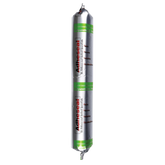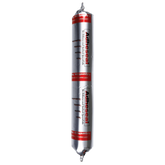Concrete and Adhesives: An Adhesesal Guide to Working with Concrete
Introduction
Concrete, a fundamental building material, plays a pivotal role in the construction industry. Its robust nature and versatile applications make it a preferred choice for professionals and the general public alike. In the Australian trades industry, concrete's interaction with specific adhesives and sealants such as Polyurethanes, MS, Hybrid, Silicones, Epoxies, and Resins is of particular interest. This blog aims to provide an in-depth understanding of concrete's composition, its collaboration with various adhesives, common applications, challenges, and how it performs under external factors specific to the Australian environment.
Scientific Analysis of Concrete
Composition and Properties
Concrete, primarily composed of cement, aggregates, and water, offers a unique blend of strength and durability. Its ability to mould into various shapes and its resistance to compression make it a widely used material in construction.
- Composition: Concrete is a mixture of Portland cement, aggregates (sand, gravel, or crushed stone), water, and often admixtures to modify its properties. The cement and water form a paste that coats the aggregates, binding them together as it hardens.
- Strength: Its compressive strength makes concrete suitable for load-bearing structures. Tensile strength can be enhanced with reinforcements.
- Durability: Resistant to weathering, wear, and various chemicals, concrete's longevity is one of its key attributes.
- Workability: The ability to be molded into different shapes and sizes makes it versatile for various construction applications.
Interaction with Specific Adhesives and Sealants
- Polyurethanes: These adhesives form a strong bond with concrete, offering flexibility and resistance to water and temperature changes. Their elasticity accommodates concrete's natural expansion and contraction.
- MS (Modified Silane): MS adhesives provide UV stability and strong adhesion to concrete. Their weather-resistant properties make them suitable for outdoor applications with concrete.
- Hybrid Adhesives: These combine the benefits of multiple adhesive technologies, offering strength and flexibility. They adhere well to concrete and can be used in various construction applications.
- Silicones: Silicones provide excellent UV and weather resistance, often used to seal joints in concrete. Their ability to withstand extreme temperatures makes them suitable for various environmental conditions.
- Epoxies: Known for their high-strength bonding, epoxies work well with concrete, especially in structural applications. They provide rigidity and can be used to repair cracks or bond concrete surfaces.
- Resins: Resins can be used to enhance concrete's appearance and protect it from wear and tear. They offer a glossy finish and can be combined with other materials to create unique visual effects.
Compatibility and Considerations
Understanding the compatibility of these adhesives and sealants with concrete requires considering factors such as surface preparation, curing conditions, and the specific requirements of the application. Proper selection and application ensure optimal performance and longevity.
Common Applications and Uses
Concrete's versatility is showcased in a myriad of applications within the construction industry. Its interaction with adhesives and sealants like Polyurethanes, MS, Hybrid, Silicones, Epoxies, and Resins further broadens its scope.
- Flooring: Concrete serves as a foundational material for floors. Polyurethanes, known for their flexibility, are often used to bond or seal concrete floors, providing durability and aesthetic appeal.
- Roofing: In roofing applications, MS adhesives can be used with concrete tiles to offer weather resistance and strong adhesion.
- Masonry and Stone Work: Hybrid adhesives are utilized in masonry for bonding concrete blocks or stones, ensuring structural integrity.
- Bridges and Infrastructure: Epoxies provide high-strength bonding in concrete bridges and infrastructure projects, enhancing stability and lifespan.
- Decorative Finishes: Resins and silicones can be used to create decorative finishes on concrete surfaces, offering both protection and visual appeal.
These applications demonstrate concrete's extensive use in construction, ranging from structural components to decorative elements. Its compatibility with different adhesives and sealants allows for tailored solutions that meet specific project needs.
Challenges and Considerations
While concrete offers many advantages, it also presents challenges that must be addressed to ensure successful application. The risks associated with overlooking these challenges can lead to significant issues:
- Surface Preparation: Proper preparation is essential for optimal adhesion. Failing to clean, prime, or manage moisture can lead to weak bonding, cracks, or even failure of the adhesive, impacting the integrity of the structure.
- Selection of Adhesive: Choosing the wrong adhesive or sealant for the specific concrete application can result in poor performance, reduced lifespan, or aesthetic flaws. The wrong choice may not withstand environmental conditions or load requirements, leading to potential safety hazards.
- Curing Conditions: Mismanaging curing conditions can affect the bonding strength and durability of both concrete and the chosen adhesive. Inadequate curing may lead to premature wear, reduced functionality, or failure in extreme conditions.
- Compliance with Standards: Non-compliance with industry standards and regulations may result in legal issues, safety risks, or subpar quality. Following guidelines ensures the reliability and safety of using concrete with adhesives and sealants.
External Considerations: Concrete and Adhesive Interaction
Concrete's performance, when combined with adhesives like Polyurethanes, MS, Hybrid, Silicones, Epoxies, and Resins, can be influenced by multiple external factors:
- Australian Climate: Australia's diverse climate, ranging from tropical to arid, can affect how concrete and adhesives respond. For instance, MS adhesives might be preferred in coastal areas for their resistance to sea salt and humidity.
- Weather and UV: Exposure to harsh weather and UV rays can degrade some adhesives. Silicones, known for UV resistance, can be used to seal concrete joints, preserving appearance and function.
- Movement: Structural movements in buildings and bridges require flexible adhesives like Polyurethanes to accommodate shifts without cracking.
- Temperatures: Extreme temperatures may influence the choice of adhesive. Epoxies, for instance, can withstand high temperatures, making them suitable for industrial applications with concrete.
- Areas Exposed to Moisture: In areas prone to moisture, such as bathrooms or outdoor settings, the selection of moisture-resistant adhesives like Hybrid Adhesives is essential to prevent deterioration and maintain integrity.
Understanding these external considerations is vital for the proper selection and application of adhesives with concrete, ensuring long-term performance and reducing maintenance needs.
Key Takeaways
- Understanding Concrete: Concrete's composition, properties, and interaction with specific adhesives are central to its application in construction.
- Application Diversity: Concrete's versatility is evident in flooring, roofing, bridges, and decorative finishes, where it's used with various adhesives and sealants.
- Challenges and Risks: Proper surface preparation, adhesive selection, curing conditions, and compliance with standards are crucial to avoid potential failures and legal issues.
- External Factors: Climate, weather, movement, temperatures, and exposure to moisture influence concrete and adhesive performance, requiring tailored solutions.
- Informed Decisions: Comprehensive knowledge empowers professionals in the Australian trades industry to make informed decisions, enhancing efficiency, safety, and sustainability.
These common applications, challenges, and considerations offer insights into concrete's interaction with specific adhesives and sealants when dealing with concrete as a substrate.




